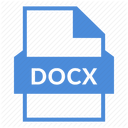The Use of Augmented Reality-Based Learning Media: Arloopa for English Descriptive Text in Secondary School
DOI:
https://doi.org/10.18196/ftl.v9i1.18789Keywords:
arloopa, augmented reality, descriptive text, digital learning media, TEFLAbstract
This study aims to understand the English learning process using Arloopa as a digital medium. This study uses a descriptive qualitative design. To answer the problem of the study, the researcher observed the learning and teaching process in an Islamic secondary school in Malang. Two classes were observed by immersion in the classroom to get data. To verify the data obtained, the researcher checked the learning module document. The researcher revealed that using Arloopa as a digital learning media requires additional skill technology for the teacher if the students need to be equipped with a mobile phone, which Arloopa is only working with a mobile phone. The teacher should connect the mobile phone’s display to the LCD projector so that the students can view an object displayed by Arloopa. It would be different if each student in the class utilized an Android phone.
References
Ali, F., & Alimah, K. (2023). A narrative inquiry of live video streaming: Voices of EFL teachers to reflect on their online learning. Journal of Foreign Language Teaching and Learning, 8(2), 100–126. https://doi.org/10.18196/ftl.v8i2.18237
Aliprantis, J., & Caridakis, G. (2019). A survey of augmented reality applications in cultural heritage. International Journal of Computational Methods in Heritage Science, 3(2), 118–147. https://doi.org/10.4018/ijcmhs.2019070107
Aprianto, E., & Heriyawati, D. F. (2020). The implementation of multiple media in improving reading comprehension skills in university students. Journal of Physics: Conference Series, 1464(1). https://doi.org/10.1088/1742-6596/1464/1/012014
arloopa. (2023). About the arloopa app. https://app.arloopa.com/
Braun, V., & Clarke, V. (2022). Thematic analysis. SAGE Publication Ltd.
But, D., Fahey, R., Feez, S., Spinks, S., & Yallop, C. (1998). Using functional grammar an explorer’s guide second edition. Springer
Hsiao, K.-F., Chen, N.-S., & Huang, S.-Y. (2012). Learning while exercising for science education in augmented reality among adolescents. Interactive Learning Environments, 20, 331–349. https://doi.org/10.1080/10494820.2010.486682
Ivanova, M. (2011). Enhancement of learning and teaching in computer graphics through marker augmented reality technology. International Journal on New Computer Architectures and Their Applications (IJNCAA), 1(1), 176–184. https://www.researchgate.net/publication/230772782
Karacan, C. G., & Akoğlu, K. (2021). Educational augmented reality technology for language learning and teaching: A comprehensive review. Shanlax International Journal of Education, 9(2), 68–79. https://doi.org/10.34293/education.v9i2.3715
Kaviyaraj, R., & Uma, M. (2021). A survey on the future of augmented reality with AI in education. Proceedings - International Conference on Artificial Intelligence and Smart Systems, ICAIS 2021, 47–52. https://doi.org/10.1109/ICAIS50930.2021.9395838
Kim, H. J., & Kim, B. H. (2018). Implementation of young children's English education system by AR type based on P2P network service model. Peer-to-Peer Networking and Applications, 11(6), 1252–1264. https://doi.org/10.1007/s12083-017-0612-2
Knapp, P., & Watkins, Megan. (2005). Genre, text, grammar: Technologies for teaching and assessing writing. UNSW Press.
Lam, Y. W., Foon Hew, K., & Chiu, T. K. F. (2018). Improving argumentative writing: Effects of a blended learning approach and gamification. https://dx.doi.org/10125/44583
Larasati, N. D. K., Tantra, D. K., & Budiarta, L. G. R. (2021). An analysis of lesson plan preparation through Google Classroom in junior high school. Journal for Lesson and Learning Studies, 4(1), 69–74. https://ejournal.undiksha.ac.id/index.php/JLLS
Lee, J. (2017). Informal digital learning of English and second language vocabulary outcomes: Can quantity conquer quality?: Informal digital learning of English. British Journal of Educational Technology, 50. https://doi.org/10.1111/bjet.12599
Madanipour, P., & Cohrssen, C. (2020). Augmented reality as a form of digital technology in early childhood education. Australasian Journal of Early Childhood, 45(1), 5–13. https://doi.org/10.1177/1836939119885311
Maruf, I. R., Sulistiyo Nugroho, B. S., Kurniawan, A., Musiafa, Z., & Satria, E. (2022). Virtual learning apps: Best instructional leadership practices in the digital age efforts to improve student learning outcomes. Jurnal Iqra’ : Kajian Ilmu Pendidikan, 7(1), 32–43. https://doi.org/10.25217/ji.v7i1.2187
Maru, M. G., Nur, S., & Lengkoan, F. (2020). Applying video for writing descriptive text in senior high school in the COVID-19 pandemic transition. International Journal of Language Education, 4(3), 408–419. https://doi.org/10.26858/ijole.v4i3.14901
Marwahdiyanti, F., Fitriati, I., & Ilyas. (2021). Analisis pemanfaatan aplikasi berbasis augmented reality untuk anak berkebutuhan khusus di Sekolah Luar Biasa Negeri 1 Kabupaten Bima. Proceeding KONIK (Konferensi Nasional Ilmu Komputer), 5(1), 208–214. https://prosiding.konik.id/index.php/konik/article/view/52
Noprianto, E. (2017). Student’s descriptive text writing in SFL. Perspectives Indonesian Journal of English Language Teaching and Applied Linguistics, 2(1). www.ijeltal.org
Nugroho, A., & Mutiaraningrum, I. (2020). EFL teachers’ beliefs and practices about digital learning of English. EduLite: Journal of English Education, Literature and Culture, 5(2), 304. https://doi.org/10.30659/e.5.2.304-321
Rakhimjonovna, F. M. (2023). Use of AR technologies in the context of digital transformation introduction. Central Asia Journal of Mathematical Theory and Computer Sciences. https://cajmtcs.centralasianstudies.org
Roussos, G., Aliprantis, J., Alexandridis, G., & Caridakis, G. (2022). Augmented reality in primary education: Adopting the new normal in learning by easily using AR-based Android applications. ACM International Conference Proceeding Series, 347–354. https://doi.org/10.1145/3575879.3576016
Sidik, A. S. (2019). Improving reading comprehension of the second grade students by using graphic organizer. JPE (Jurnal Pendidikan Edutama, 6(2). http://ejurnal.ikippgribojonegoro.ac.id/index.php/JPE
Silva, R., Oliveira, J. C., & Giraldi, G. A. (2003). Introduction to augmented reality. National Laboratory for Scientific Computation, 11, 1-11.
Waliyuddin, D. S., & Sulisworo, D. (2022). High-order thinking skills and digital literacy skills instrument test. Ideguru: Jurnal Karya Ilmiah Guru, 7(1). https://doi.org/10.51169/ideguru.v7i1.310
Waliyuddin, D. S., & Sulisworo, D. D. (2021). Respon Peserta Didik Terhadap Augmented Reality Arloopa Sebagai Multimedia Pembelajaran Matematika. 3(1). http://matriks.greenvest.co.id
Yildiz, E. P. (2022). Augmented reality applications in education: Arloopa application example. Higher Education Studies, 12(2), 47. https://doi.org/10.5539/hes.v12n2p47
Yılmaz, R. M., & GÖKTAŞ, Y. (2018). Using augmented reality technology in education. Cukurova University Faculty of Education Journal, 47(2), 510-537. https://doi.org/10.14812/cuefd.376066
Yu, W., Chi, S., & Shi, C. (2018). Research on application mode of VR/AR technology in education and teaching. Proceedings of 3rd International Social Sciences and Education Conference (ISSEC 2018). https://doi.org/10.25236/issec.2018.057
Zuniari, N. I., Ridlo, Z. R., Wahyuni, S., Ulfa, E. M., & Dharmawan, M. K. S. (2022). The effectiveness of implementation of learning media based on augmented reality in elementary school in improving critical thinking skills in solar system course. Journal of Physics: Conference Series, 2392(1). https://doi.org/10.1088/1742-6596/2392/1/012010
Downloads
Published
How to Cite
Issue
Section
License
Copyright
Authors retain copyright and grant the journal right of first publication with the work simultaneously licensed under a Creative Commons Attribution-ShareAlike 4.0 International License that allows others to share the work with an acknowledgment of initial publication in this journal.
Authors are permitted and encouraged to post their work online (e.g., in institutional repositories, social media account, or on their website) after the article getting published in the journal, as it can lead to productive exchanges and earlier and greater citation of published work (See The Effect of Open Access).License
You are free to:
- Share — copy and redistribute the material in any medium or format
- Adapt — remix, transform, and build upon the material for any purpose, even commercially.
Attribution — You must give appropriate credit, provide a link to the license, and indicate if changes were made. You may do so in any reasonable manner, but not in any way that suggests the licensor endorses you or your use.
ShareAlike — If you remix, transform, or build upon the material, you must distribute your contributions under the same license as the original.
- No additional restrictions — You may not apply legal terms or technological measures that legally restrict others from doing anything the license permits.



.png)





